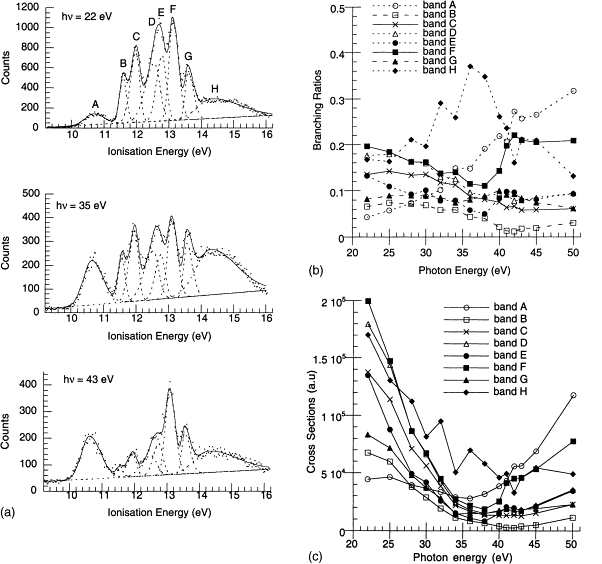Simply put, the photoionisation cross section is the probability of an electron photoemission process occuring and is commonly denoted as σ(ω).
The photoionization cross section is defined as the probability per unit area that a photon with a particular energy will ionize an atom or molecule. It is usually expressed in units of square centimeters (cm²).
Different orbitals and different elements all have varied σ(ω), and so the utilisation of a variable photon energy source (such as synchotron XPS) to assess, for example, band structure in solids results in markedly different lineshapes at different energies (Figure 1).1

Recently, the Applied X-ray Spectroscopy team at UCL (headed by Dr. Anna Regoutz) undertook the incredibly useful task of digitising photoionisation cross sections of all elements from 1 ≤ Z ≤ 103 for a wide range of common excitation energies.
You can find this great resource here.
If you do use any of the work provided by the Regoutz group, be sure to cite the original paper:
J.J. Yeh, I. Lindau, Atomic subshell photoionization cross sections and asymmetry parameters: 1 ⩽ Z ⩽ 103, Atomic Data and Nuclear Data Tables, Volume 32, Issue 1, 1985, Pages 1-155, ISSN 0092-640X, https://doi.org/10.1016/0092-640X(85)90016-6.
Also, cite the digitised version to give credit to the amazingly useful work that the Regoutz team have put in to developing this fantastic resource!
C. Kalha, N. K. Fernando, C. Vigil Hernandez, E. E. Kurtulus, J. Li, Y. Zhou, A. Regoutz, Digitisation of Yeh and Lindau Photoionisation Cross Section Tabulated Data, 2020, figshare, Datase, https://doi.org/10.6084/m9.figshare.12389750.v2.
References
- Green, J. C. and P. Decleva (2005). “Photoionization cross-sections: a guide to electronic structure.” Coordination chemistry reviews 249(1-2): 209-228. Read it online here.